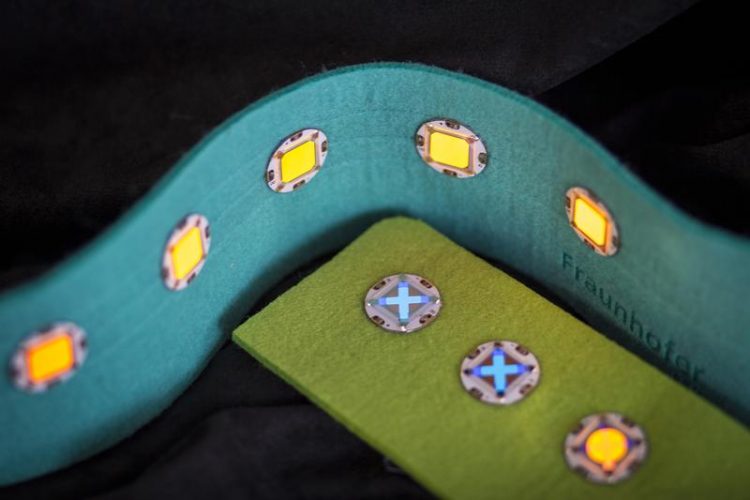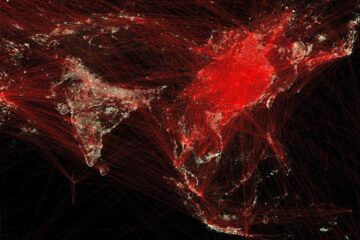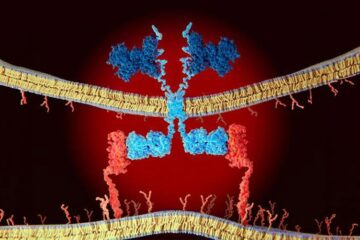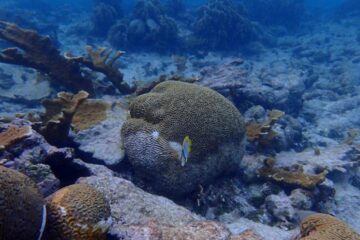OLED integration in textiles: functional and eye-catching

O-BUTTON, customer-specific OLED elements for textile integration © Fraunhofer FEP, Photograph: Jan Hesse | Picture in printable resolution: www.fep.fraunhofer.de/press
The versatile OLEDs can not only light in color, they can also be designed in any shape and even transparent or dimmable. Applied on wafer-thin foils, they are now finding their way into textiles. The range of applications is diverse and not limited to fashion trends or distinctive brand and design elements.
Jan Hesse, OLED design and integration specialist in the field of flexible organic electronics at Fraunhofer FEP, draws a vision: “The integration of luminous elements in clothing not only freshens up fashion designs, it can also create very concrete benefits:
Luminous logos or applications are more easily noticed and considerably increase the visibility and thus the safety of the wearer, e.g. in road traffic.” Their use would be conceivable, for example in workwear for night logistics.
Since scientists can adapt OLEDs to specific wavelength ranges, special applications such as in medicine are also conceivable. Infrared light, for example, is successful in the therapy of skin diseases. There is the possibility of shirts with integrated flat infrared lights to be used for light therapy.
To simplify the integration of OLED elements in clothing and to give designers the opportunity to use the technology in an uncomplicated way, the scientists at the Fraunhofer FEP have developed a functional button. This “O-button” combines a wafer-thin foil-based OLED with a microcontroller on a conventional circuit board.
This circuit board in the shape of a button is attached to the textile with conductive yarn and supplied or controlled with electrical power. The OLED itself is continuously dimmable. Two-color-variable variants of the button are also available.
There are almost no limits to the structuring of OLEDs. The textiles finished in this way are supposed to give designers ideas for new innovative designs and thereby open up further areas of application.
Fraunhofer FEP provides samples of the “O-BUTTON” for this purpose, can convert individualized designs into initial prototypes and can be a partner up to pilot production. Scientists are already collaborating with designers in the fashion industry.
Challenges regarding further textile integration, washability or recycling are tackled and further developed together with partners. The first OLED fashion will be on display in stores in about three years.
Fraunhofer FEP at the ESTC 2018
Exhibition:
Fraunhofer FEP, Booth No. 29
Lecture:
Tuesday, September 18, 2018
Session FE1
3:15 pm: Conductors and transistors for biodegradable devices
Dr. Michael Hoffmann, Fraunhofer FEP
Poster:
Wednesday, September 19, 2018
Interactive Session INTS2B
10:45 am: Integration of Lighting Functionality
within Textiles by Flexible OLED,
Jan Hesse, Fraunhofer FEP
More information about O-BUTTON: http://s.fhg.de/rNz
Press contact:
Fraunhofer Institute for Organic Electronics, Electron Beam and Plasma Technology FEP
Winterbergstraße 28 | 01277 Dresden, Germany | www.fep.fraunhofer.de
Head of Marketing: Ines Schedwill | Phone +49 351 8823-238 | ines.schedwill@fep.fraunhofer.de
Head of Corporate Communications: Annett Arnold, M.Sc. | Phone +49 351 2586-333 | annett.arnold@fep.fraunhofer.de
Media Contact
All latest news from the category: Power and Electrical Engineering
This topic covers issues related to energy generation, conversion, transportation and consumption and how the industry is addressing the challenge of energy efficiency in general.
innovations-report provides in-depth and informative reports and articles on subjects ranging from wind energy, fuel cell technology, solar energy, geothermal energy, petroleum, gas, nuclear engineering, alternative energy and energy efficiency to fusion, hydrogen and superconductor technologies.
Newest articles

Economies take off with new airports
A global study by an SUTD researcher in collaboration with scientists from Japan explores the economic benefits of airport investment in emerging economies using nighttime satellite imagery. Be it for…

CAR T–cell immunotherapy targets
Pan-cancer analysis uncovers a new class of promising CAR T–cell immunotherapy targets. Scientists at St. Jude Children’s Research Hospital found 156 potential CAR targets across the brain and solid tumors,…

Stony coral tissue loss disease
… is shifting the ecological balance of Caribbean reefs. The outbreak of a deadly disease called stony coral tissue loss disease is destroying susceptible species of coral in the Caribbean…





















